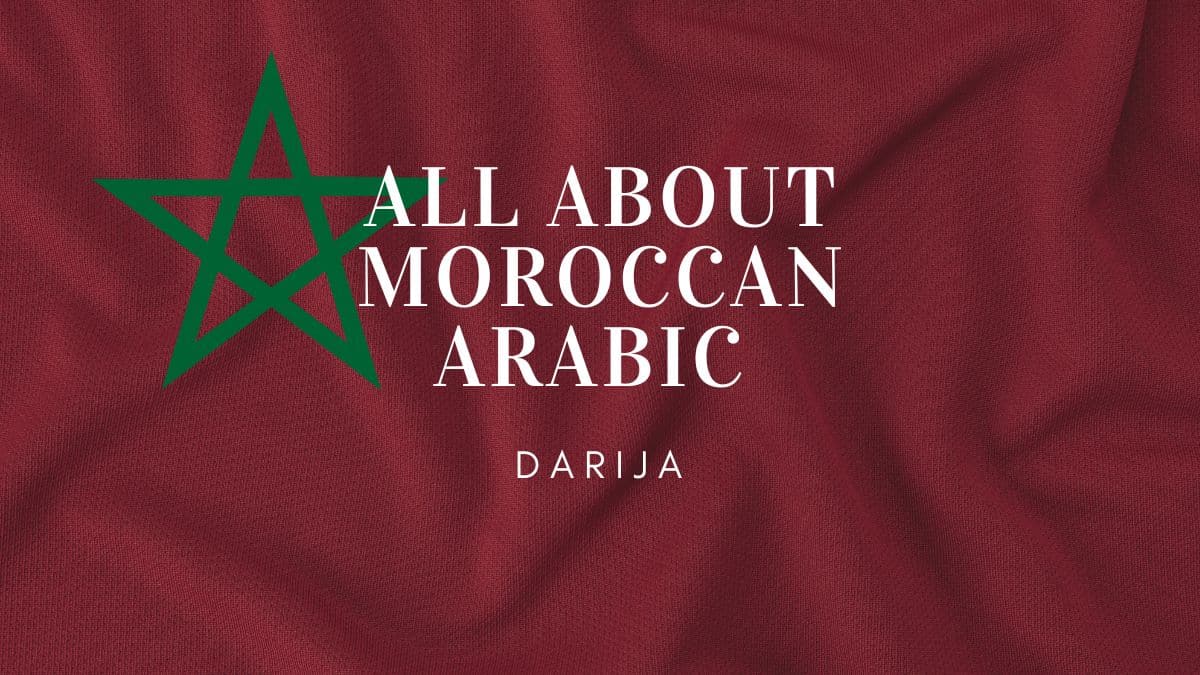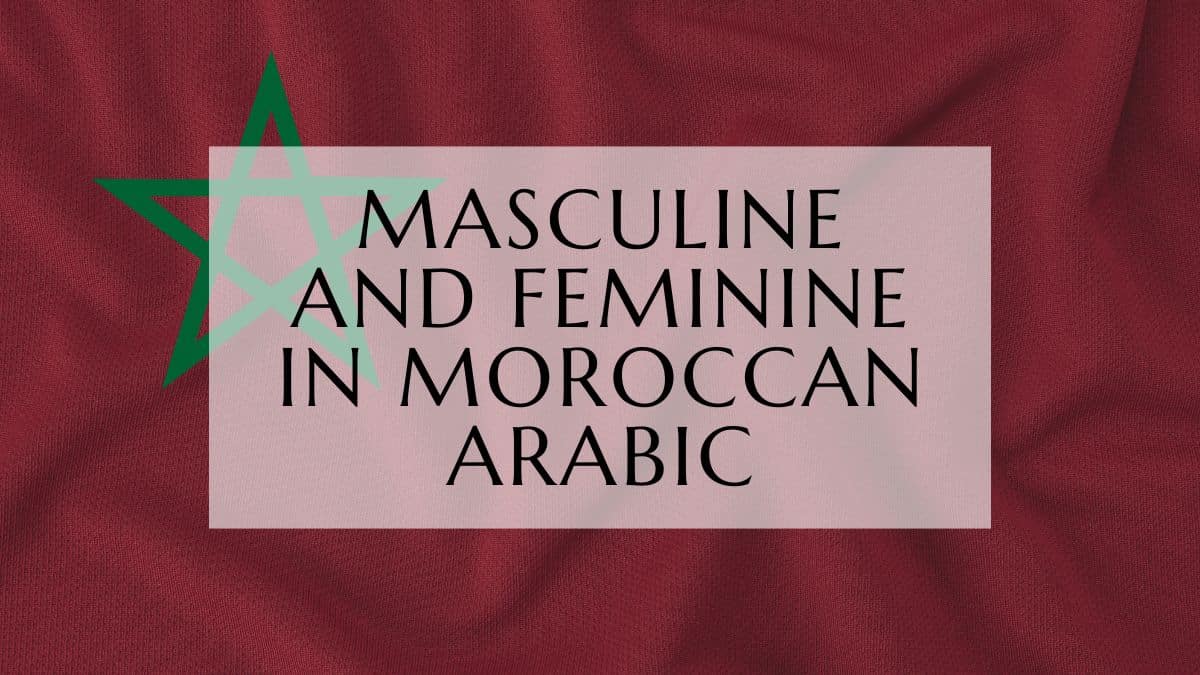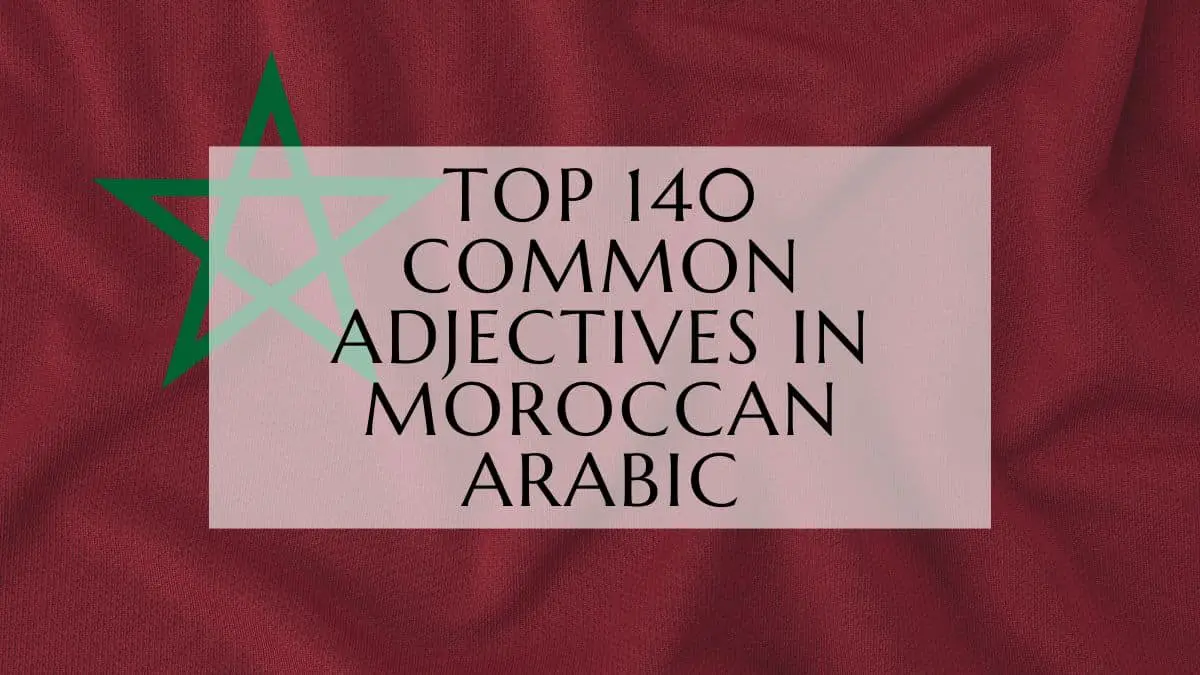Learning how to count in Moroccan Arabic is a basic yet very important skill to any Darija language learner, using it you can tell the hour, and your age, understand the cost of something or even tell how long you’re staying in a certain place.
So in this post, you will learn how to count from 0 to 20 in Moroccan Arabic (with audio) and then learn how to say numbers until 1 Billion! yes, you read it right.
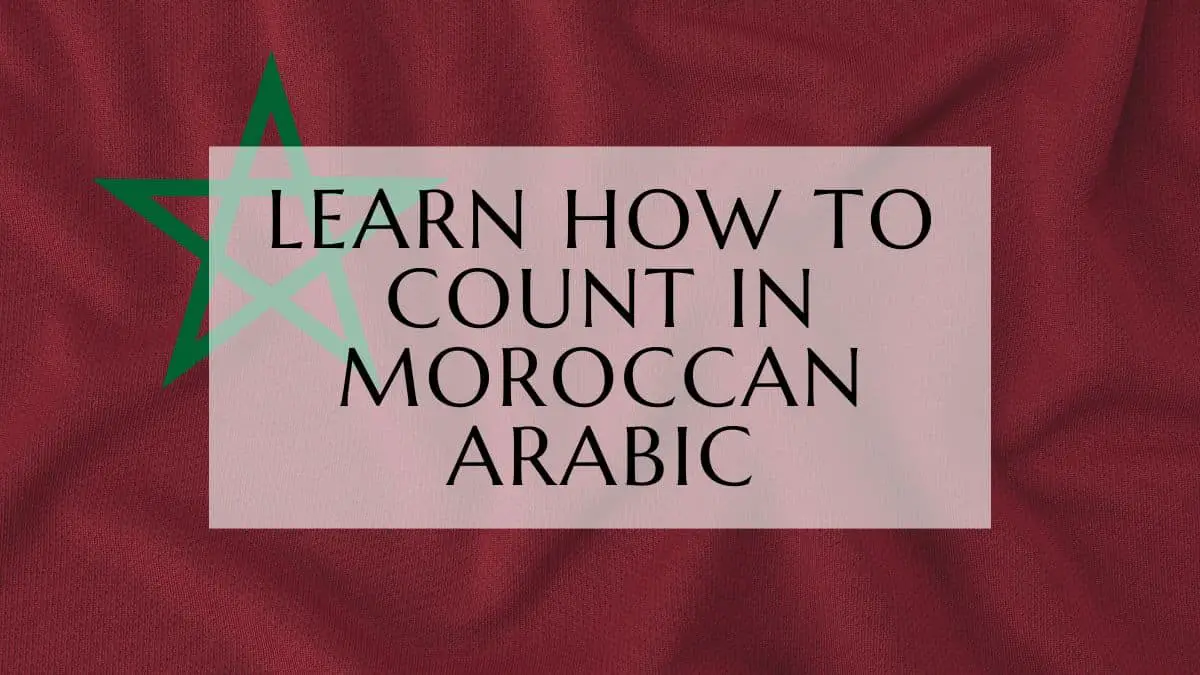
Counting From 0 To 20 In Moroccan Arabic
| Number | Transcribed Moroccan Arabic | Using Arabic Alphabet |
| 0 | Zero/Sifr | زيرو/صفر |
| 1 | Wa7ed | واحد |
| 2 | Juj | جوج |
| 3 | Tlata | تلاتة |
| 4 | Rb3a | ربعة |
| 5 | Khmsa | خمسة |
| 6 | Setta | ستة |
| 7 | Sb3a | سبعة |
| 8 | Tmanya | تمنية |
| 9 | Ts3a | تسعة |
| 10 | 3eshra | عشرة |
| 11 | 7dash | حداش |
| 12 | Tnash | طناش |
| 13 | Tlattash | تلطاش |
| 14 | Rba3tash | ربعطاش |
| 15 | Khmastash | خمسطاش |
| 16 | Settash | سطاش |
| 17 | Sb3tash | سبعطاش |
| 18 | Tmantash | تمنطاش |
| 19 | Ts3tash | تسعطاش |
| 20 | 3eshrin | عشرين |
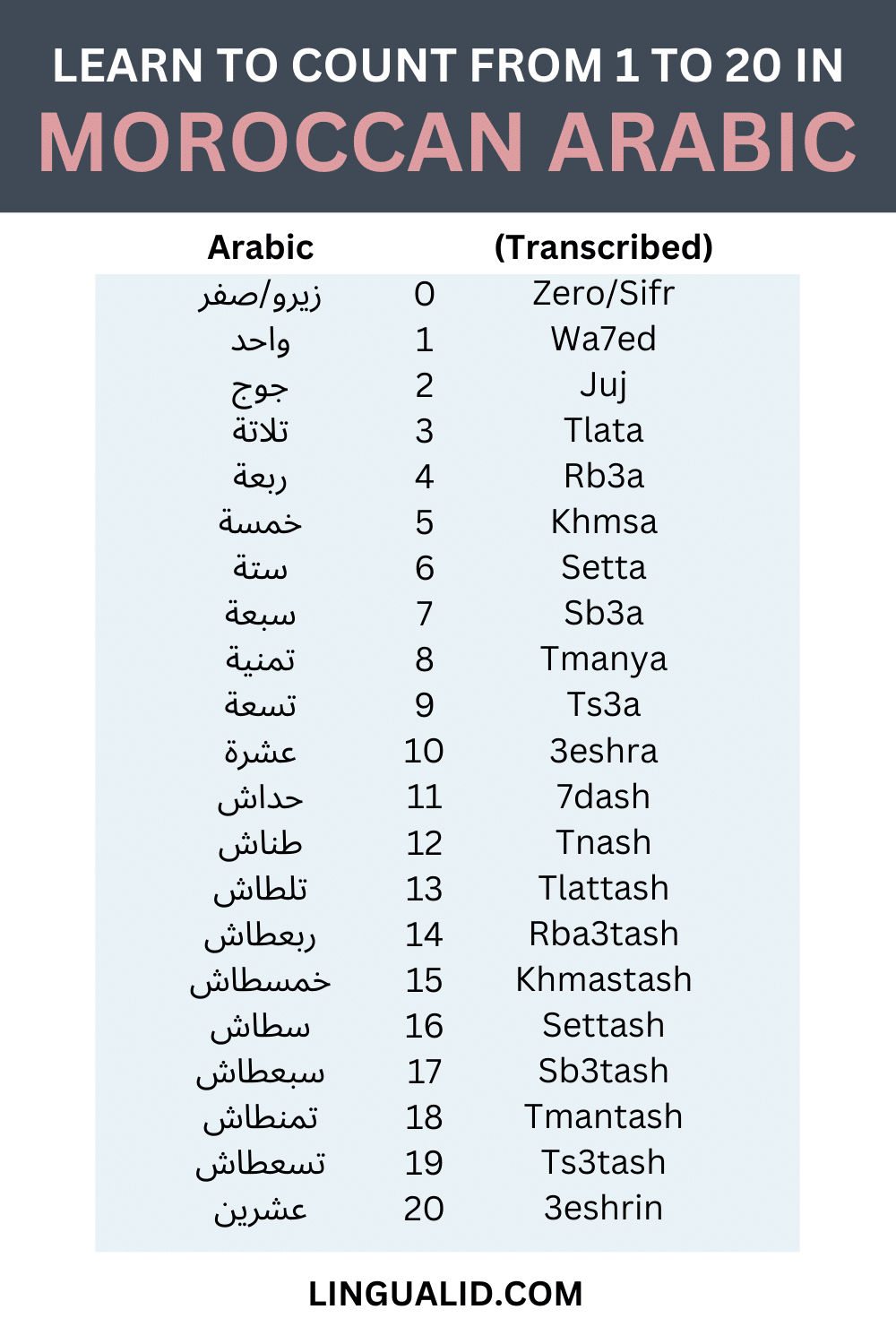
Note: you can practice what you’ve learned here, and learn how to pronounce each of the words in our Memrise course here, don’t know how to use the platform or sign up? we’ve got you covered in this easy-to-follow tutorial here.
Counting Objects and People In Darija
To count anything in Moroccan Arabic, we use this simple formula:
Number + dyal/d (ديال/د) + definite plural noun
(“d” is a short form of “dyal” meaning “of”)
So, 2 girls would be:
Juj dyal lbnat (جوج ديال لبنات) Bnat is the plural of Bnt, and L is the definite article here.
There is an exception with the number 2 that you can simply say “2 bnat” without “dyal/d”, but remember, only with the number 2.
3 girls: tlata dyal lbnat
Try to count girls from 1 girl to 20, that would be weird but anyway lol
PLEASE NOTE: I don’t want you to think a lot about definite/indefinite articles, plural forms, feminine/masculine nouns, or any grammar rule for now, just try to follow the instructions to acquire the language in a better way.
Double Digits
As we talked about in The Beginner’s Guide To Moroccan Arabic, (which I highly recommend that you read), 21 is wa7ed w3shrin literally “one and twenty”, 23 is tlata w3shrin, 24 is rb3a w3shrin, cool! but there is an exception with the number 2 here again: for 22 we don’t say “juj w3shrin”, we use tnin instead of juj, so 22 would be tnin w3shrin, same rules apply for 32, 42, 52…
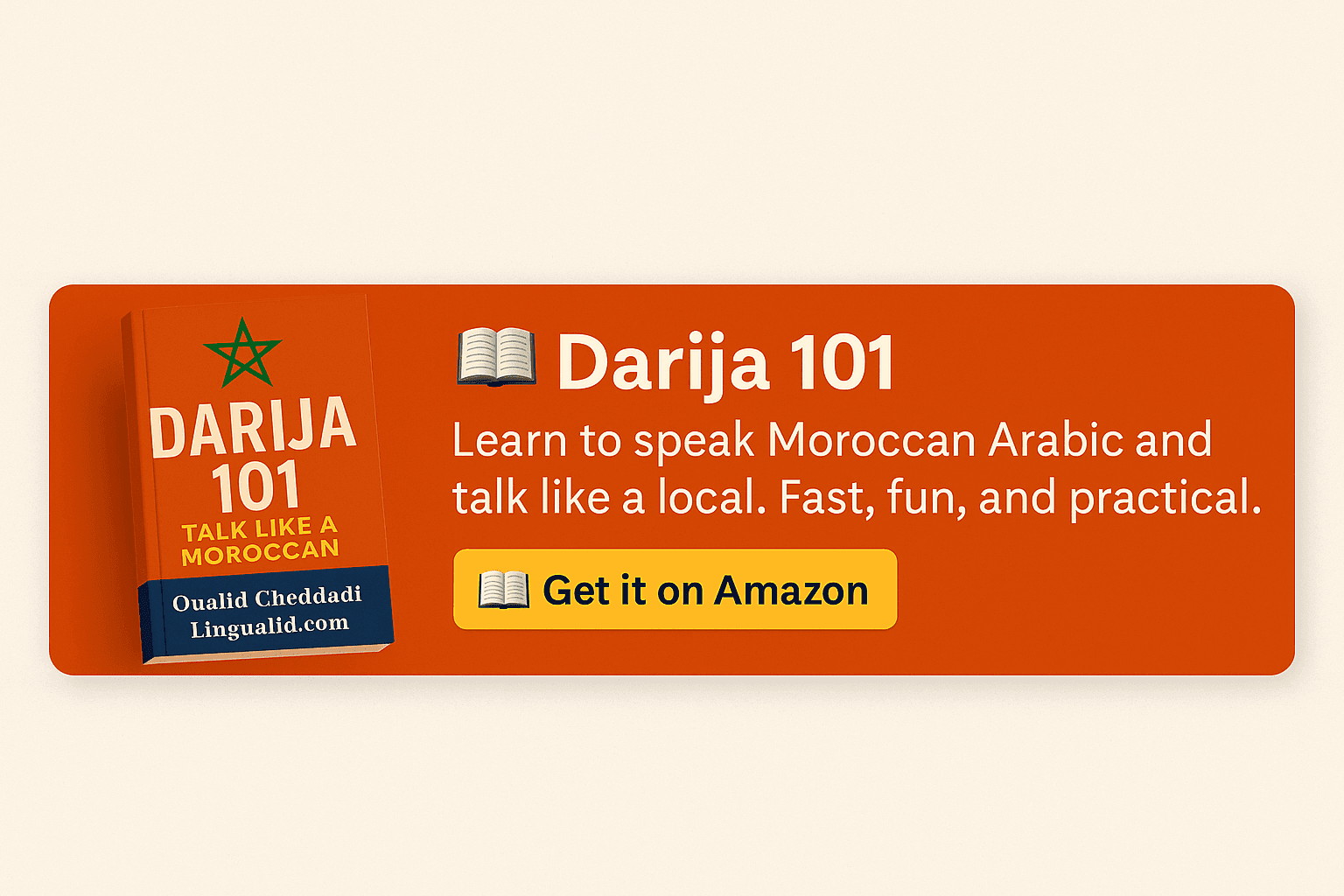
Multiples Of 10
| Number | Transcribed Moroccan Arabic | Using Arabic Alphabet |
| 10 | 3shra | عشرة |
| 20 | 3shrin | عشرين |
| 30 | tlatin | تلاتين |
| 40 | rb3in | ربعين |
| 50 | 5msin/khmsin | خمسين |
| 60 | settin | ستين |
| 70 | sb3in | سبعين |
| 80 | tmanin | تمانين |
| 90 | ts3in | تسعين |
Hundreds And Beyond
If you can’t remember them or they are a little hard, add the number to 100 (mya), for example, 400 is rb3amya, it’s not 100% correct but people will still understand you, but use the correct form listed below once you get familiar with it deal?
| Number | Transcribed Moroccan Arabic | Using Arabic Alphabet |
| 100 | mya | مية |
| 200 | mitin | ميتين |
| 300 | tltmya | تلتمية |
| 400 | rb3amya | ربعمية |
| 500 | 5msamya/khmsamya | خمسمية |
| 600 | settamya | ستمية |
| 700 | sb3amya | سبعمية |
| 800 | temnemya | تمنمية |
| 900 | ts3amya | تسعمية |
Counting From 1000 To 9000
The word 1000 is alf, 2000 is alfin and “thousands” is alaf, so from 3000 you literally say three thousand: tlatalaf, same with the others:
| Number | Transcribed Moroccan Arabic | Using Arabic Alphabet |
| 1000 | alf | ألف |
| 2000 | alfin | ألفين |
| 3000 | tlatalaf | تلتالاف |
| 4000 | rb3alaf | ربعالاف |
| 5000 | 5msalaf/khmsalaf | خمسالاف |
| 6000 | settalaf | ستالاف |
| 7000 | sb3alaf | سبعالاف |
| 8000 | temnalaf | تمنالاف |
| 9000 | ts3alaf | تسعالاف |
Let’s see some big numbers:
| Number | Transcribed Moroccan Arabic | Using Arabic Alphabet |
| 10.000 | 3eshralaf | عشرآلاف |
| 20.000 | 3shrin alf | عشرين ألف |
| 30.000 | tlatin alf | تلاتين ألف |
| 40.000 | rb3in alf | ربعين ألف |
| 100.000 | myat alf | مية ألف |
| 200.000 | mitin alf | ميتين ألف |
| 500.000 | 5msmyat alf | خمسمية ألف |
| 1.000.000 | melion | مليون |
| 2.000.000 | juj melion | جوج مليون |
| 1.000.000.000 | meliar | مليار |
| 5682 | khemsalaf w settemya w tnin w tmanin | خمسالاف و ستمية و تنين و تمانين |
| 2022 | alfin wtnin w3shrin | ألفين و تنين و عشرين |
Feel free to repeat and try to say random numbers in Darija.
Moroccan Arabic Numbers: A Study Guide
Quiz
Instructions: Answer the following questions in 2-3 sentences.
- How do you say “two girls” in Moroccan Arabic? Explain the rule for counting objects.
- What is the exception to the rule for counting objects with the number “two”?
- How is the number 21 formed in Moroccan Arabic? Provide another example using a different number.
- What is unique about the formation of the number 22 and other numbers like it (32, 42, etc.)?
- What is the Moroccan Arabic word for 100? How are numbers like 400 formed?
- Explain the structure of numbers in the thousands, like 3,000, in Moroccan Arabic.
- How would you say “twenty thousand” in Moroccan Arabic?
- What is the Moroccan Arabic word for “one million”?
- Break down the components of the number 5682 in Moroccan Arabic and explain how it is formed.
Answer Key
- “Two girls” in Moroccan Arabic is “juj dyal lbnat.” To count objects, you generally use the formula: number + “dyal/d” + definite plural noun.
- The exception is that with the number “two,” you can simply say “juj bnat” without using “dyal/d.”
- 21 is formed as “wa7ed w3shrin,” literally “one and twenty.” Similarly, 35 would be “khamsa w tlatin” (“five and thirty”).
- For numbers like 22, 32, and so on, the word “tnin” is used instead of “juj.” So, 22 is “tnin w3shrin.”
- The Moroccan Arabic word for 100 is “mya.” Numbers like 400 are formed by combining the number with “mya,” such as “rb3amya.”
- Numbers in the thousands use the word “alf” for 1000 and “alaf” for “thousands.” So, 3,000 is “tlatalaf” – literally “three thousands.”
- “Twenty thousand” in Moroccan Arabic is “3shrin alf.”
- The Moroccan Arabic word for “one million” is “meliون.”
- 5682 is “khamsalaf w settemya w tnin w tmanin.” It is formed by breaking down the number into its components: five thousand (khamsalaf), six hundred (settemya), two (tnin), and eighty (tmanin).
Happy learning!
Oualid Cheddadi is the founder of Lingualid, a platform that inspires independent language learners worldwide, regardless of the language they are learning. The name “Lingualid” is derived from the Portuguese word for “language,” “língua,” and the last three letters of Oualid’s name, “Lid.”

